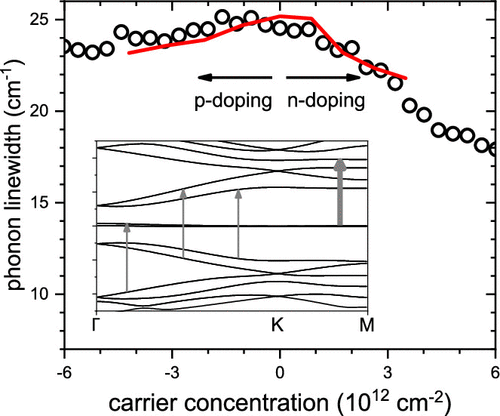Electron-phonon coupling in a magic-angle twisted-bilayer graphene device from gate-dependent Raman spectroscopy and atomistic modeling
| REVIEWS AND HIGHLIGHTS | QUANTUM SCIENCE | MOLECULAR AND SOFT-MATTER | ULTRAFAST NANO-OPTICS AND NANOPHOTONICS | MINERALOGY AND GEOCHEMISTRY |
|---|
Andreij C. Gadelha, Viet-Hung Nguyen, Eliel G. S. Neto, Fabiano Santana, Markus B. Raschke, Michael Lamparski, Vincent Meunier, Jean-Christophe Charlier, and Ado Jorio
Nano Lett. 22, 6069 (2022).
DOI PDF SI

The importance of phonons in the strong correlation phenomena observed in twisted-bilayer graphene (TBG) at the so-called magic-angle is under debate. Here we apply gate-dependent micro-Raman spectroscopy to monitor the G band line width in TBG devices of twist angles θ = 0° (Bernal), ∼1.1° (magic-angle), and ∼7° (large-angle). The results show a broad and p-/n-asymmetric doping behavior at the magic angle, in clear contrast to the behavior observed in twist angles above and below this point. Atomistic modeling reproduces the experimental observations in close connection with the joint density of electronic states in the electron–phonon scattering process, revealing how the unique electronic structure of magic-angle TBGs influences the electron–phonon coupling and, consequently, the G band line width. Overall, the value of the G band line width in magic-angle TBG is larger when compared to that of the other samples, in qualitative agreement with our calculations.
